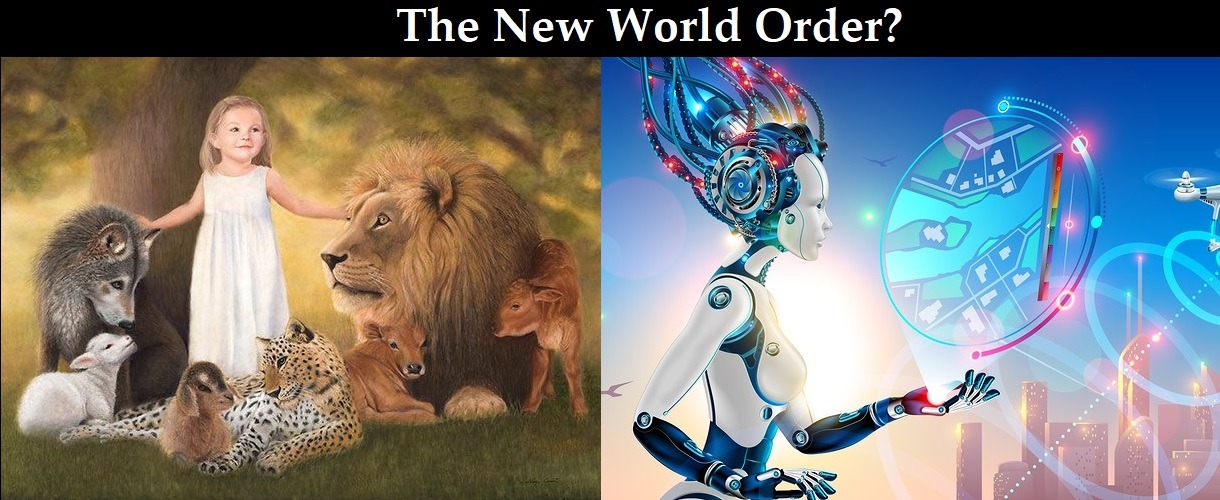for Charles Hugh Smith
Of Two Minds
Excerpts from Smith’s Musings Report newsletter
The world is abuzz with the apparent power of ChatGPT and similar programs to compose human-level narratives and generate images from simple commands.
Many are succumbing to the temptation to extrapolate these powers to near infinity, that is, the Singularity in which AI reaches superintelligence Nirvana.
All the excitement is fun, but it makes more sense to start by placing ChatGPT in the context of the history of AI and our socio-economic system.
I became interested in AI in the early 1980s and read numerous books by the leading AI researchers of the time.
AI began… with the dream of a Universal General Intelligence, a computational machine that matched humanity’s ability to apply generalized intelligence to any problem.
This quickly led to the dawning realization that human intelligence was not just logic or reason; it was an immensely complex system that depended on sight, heuristics (rules of thumb), and many other subsystems.
Artificial intelligence goes through cycles of excitement over advancements followed by deflating to realize the limits of advancements.
The increase in computing power and software programming in the 1980s led to advances in these subfields: machine vision, algorithms embodying heuristics, and so on.
At the same time, philosophers such as Hubert Dreyfus and John Searle were exploring what we mean by knowing and understanding, and wondering whether computers could achieve what we call “understanding.”
This article (among many) summarizes the critique of AI being able to duplicate human understanding: intentionality and background: Searle and Dreyfus versus classical AI theory. (There are many other equally sleepy articles on these topics.)
Simply put, did the execution of a script / algorithm really “understand” the problem as humans understand the problem?
The answer is, of course, no. The Turing test, programming a computer to mimic human language and responses, can be programmed/programmed, but that doesn’t mean the computer has human understanding. It is simply distilling human responses into heuristics that mimic human responses.
I audited (attended lectures without being a registered student) one of Professor Searle’s classes at UC-Berkeley in 1987. (Searle has since been denounced and disgraced for his blatant sexual harassment of female students) .
One result of this discussion of “what is consciousness and understanding” was that AI moved away from the dream of general intelligence to the specifics of machine learning.
In other words, it doesn’t matter if we try to make AI mimic human understanding, we just enable it to solve complex problems.
The basic idea of machine learning is to distill the constraints and rules of a system into algorithms, and then enable the program to apply these tools to real-world examples.
Given enough real-world examples, the system develops heuristics (rules of thumb) about what works and what doesn’t, which aren’t necessarily visible to human researchers.
In effect, the machine learning program becomes a “black box” in which its progress is opaque to those who programmed its tools and digitized real-world examples into forms the program could work with.
It is important to differentiate this machine learning from statistical analysis using statistical algorithms.
For example, if a program is designed to look for statistically relevant patterns and correlations, it sorts through millions of social media profiles and purchase histories and finds that Republican surfers living in (say) Delaware are likely to be Chipotle fans.
This statistical analysis is called “big data,” and while it has obvious applications for marketing everything from candidates to burritos, it doesn’t qualify as machine learning.
Similarly, algorithms such as ChatGPT that generate natural language narratives from databases and heuristics are not considered machine learning unless they are advanced within a “black box” in which the input (the single request) and exit. but the process is unknown.
Google has an AI team called DeepMind that tackled the immensely complex task of figuring out how proteins built from thousands of amino acid sequences fold into compact shapes in nanoseconds.
The problem of calculating all possible folds in 200 million different proteins cannot be solved by simply brute force calculation of all permutations, so it required breaking down each step of the process into algorithms.
The final product, AlphaFold, has 32 component algorithms, each of which encapsulates different knowledge bases from relevant disciplines (biochemistry, physics, etc.).
DeepMind’s AI makes a giant leap in solving protein structures.
This is how project leader Demis Hassabis describes the capabilities of the “black box”:
“It’s clear that AlphaFold 2 is learning something implicit about the structure of chemistry and physics. It kind of knows what things might be plausible.
I think AlphaFold has captured something quite profound about the physics and chemistry of molecules… it’s almost learning about it in an intuitive sense.”
But there are limits to what AlphaFold can do and what it’s good for: “I think we’re going to have more and more researchers looking for areas of proteins that AlphaFold is not good at predicting.”
In other words, AlphaFold cannot be said to “understand” the entirety of protein folding. It is good to limit the possible folds to a subset and present these possibilities in a form that can be compared to the actual protein structures identified by laboratory processes. You can also assign a confidence level to each of your predictions.
This is useful, but far from “understanding” and it is a disservice to claim otherwise.
Subscribe to Of Two Minds.
See also:
Understand the times we are currently living in
How to determine if you are a disciple of Jesus Christ or not
Synagogue of Satan: Why It’s Time to Leave the Corporate Christian Church

Has everyone left you because you’re not ashamed to tell the truth? Stay the course!

When the World is Against You: God’s Power to Intervene for Those Who Resist

An idolatrous nation celebrates “freedom” even though they are slaves to the pharmaceutical cult
What happens when a holy and just God gets angry? Lessons from history and the prophet Jeremiah

The most important truth about the arrival of the “new world order” Almost no one disputes it

Insider exposes Freemasonry as the world’s oldest secret religion and Luciferian plans for the new world order

Identifying the Luciferian Globalists Implementing the New World Order: Who Are the “Jews”?

Posted on February 6, 2023


